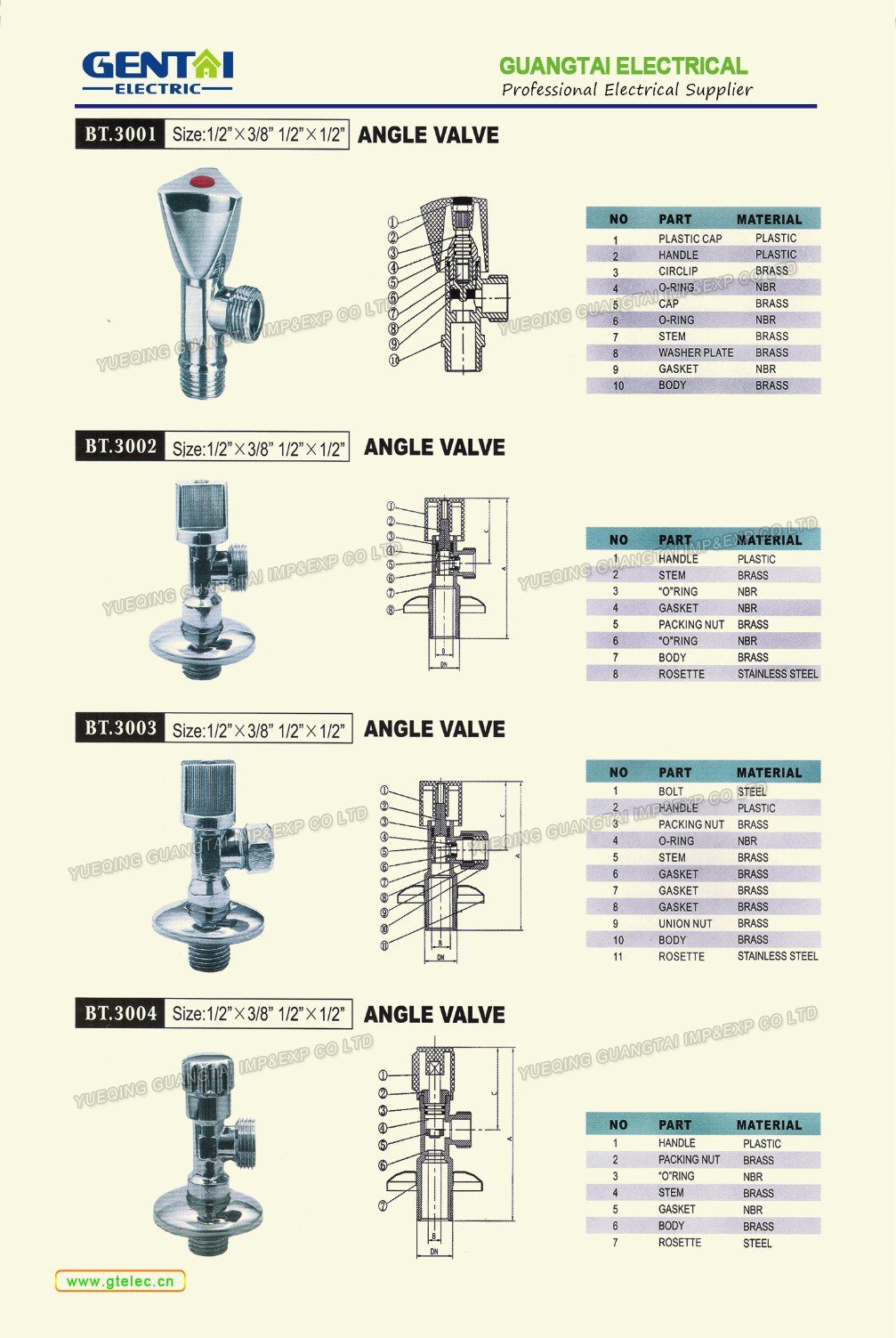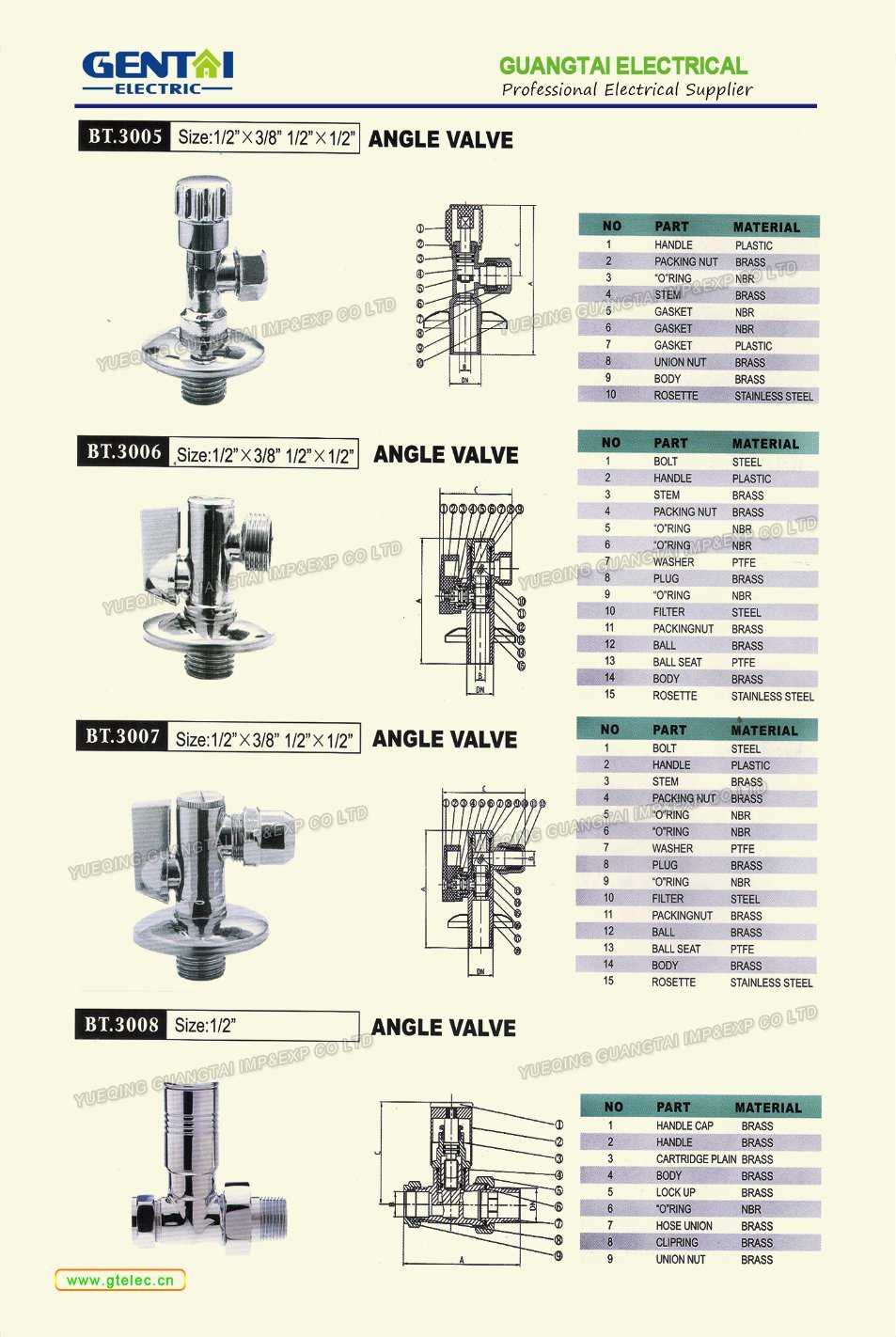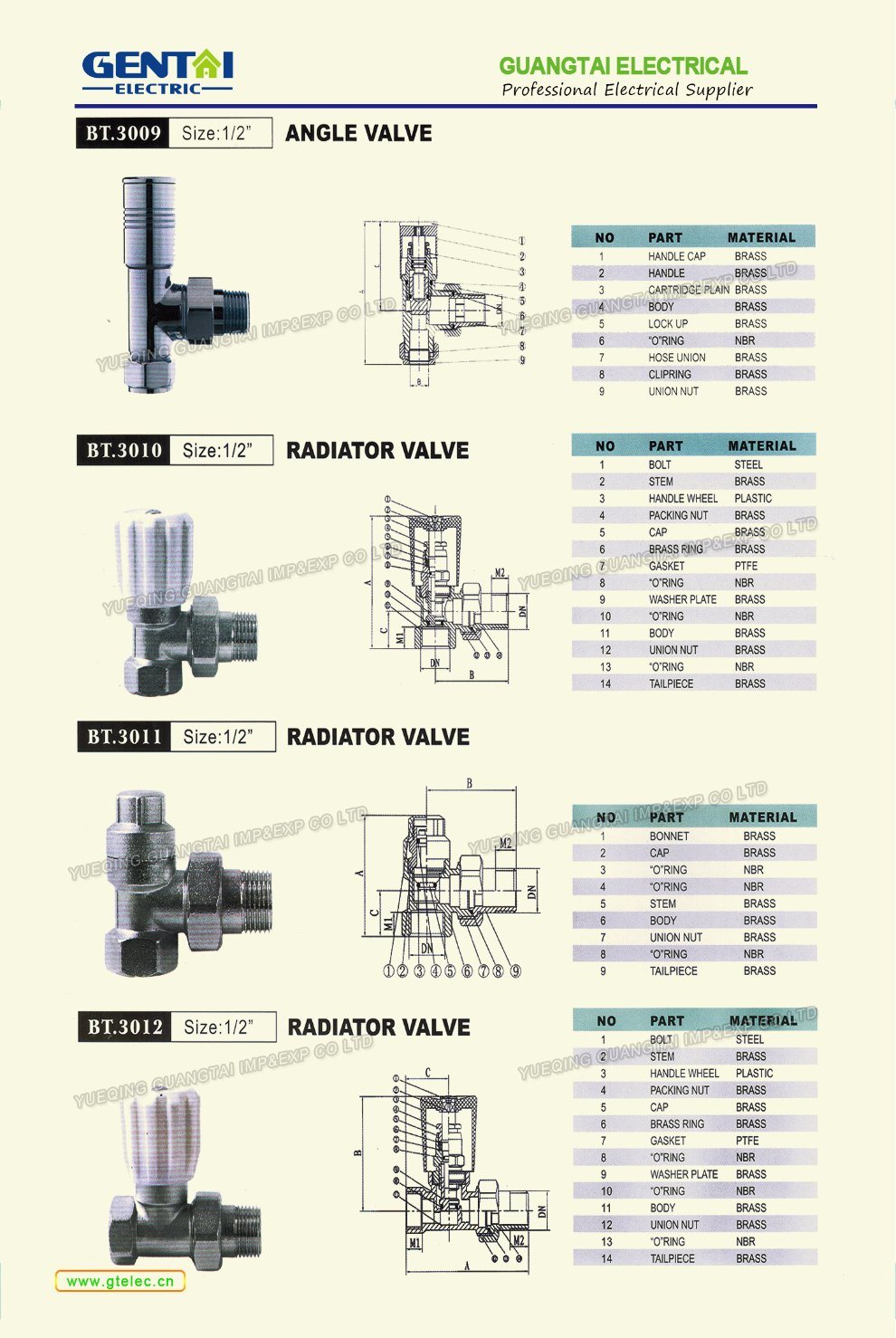Brass 1 Way Angle Valve
Brass 1 way Angle Valve
Code: BT.3005
Size: 3/8", 1/2", 3/4", 1", 1"1/4, 1"1/2, 2", 2"1/2, 3", 4"
| NO | PART | MATERIAL |
| 1 | BODY | BRASS |
| 2 | BONNET | BRASS |
| 3 | BALL SEAT | PTFE |
| 4 | BALL | BRASS |
| 5 | STEM | BRASS |
| 6 | "O"RING | NBR |
| 7 | HANDLE | STEEL |



Suitable for domestic water services, heating and air-conditioning plants, compressed air systems.
Brass body, brass ball, brass stem & PTFE seal
Body surface with nickel-plated,female / female, steel flat handle.
Nominal pressure: 1.6Mpa
Working medium: Water, gas, oil
BSP or  NPT thread
FAQ:
Q1:Are you a trading company or manufacturer?
 We are professional manufacturer for distribution board and meter socket . also we supply of different electrical and electronic itemsÂ
Q2:why will you choice us :
 more than 10years of professional teams will give you good quality products ,good service ,and reasonable priceÂ
Q3:Can we have our logo or company name to be printed on your products or the package?Â
 We offer OEM , ODM . our designer can make special design for you .
Q4:Â Is the MOQ fixed?Â
 The MOQ is flexible and we accept small order as trial order.
Q5:Can I have a visit to you before the order?
 you are welcome to visit our company ..
 our company is only one hour by Air from shanghaiÂ
Â
Dear Customers,
If you have any question , please feel free to contact  with me by  below Contact information :
GUANGTAI ELECTRICAL CO LTD
ARUS ELECTRICAL LIMITEDÂ (Sister Company)
Ms. Angel Huang
Â
www.gtelec.cn
Â
A lathe is used to fashion a rotating piece of raw metal, wood, or composite into a precise configuration using movable cutting tools, or bits set to varying depths. The process, known as turning, or machining, is most often accomplished with a horizontal lathe. Often, however, space or material constraints, sometimes even personal preferences, necessitate the use of a vertical lathe.
Essentially a horizontal lathe turned on end, a vertical lathe, also called a boring tool, is composed of basically the same parts as a horizontal lathe. As implied, the functions of vertical lathes are performed up and down, rather than side to side, as is the case with horizontal lathes. This vertical alignment allows short, heavy, bulky materials to be machined more efficiently than with a horizontal lathe.
All lathes, vertical or horizontal, are comprised of the same basic parts. The headstock encloses the spindle and chuck, the parts that actually turn the material. The bed catches the shavings, and also serves as a brace for the horizontal lathe. The feedscrew and leadscrew, mounted on the lathe carriage, adjust the speed and distance traveled by the cutters along the stock. The cross slide and compound rest position the toolbox, which, in turn, mounts the bits.
The tailpost, at the opposite end of the lathe spindle, clutches the stock and braces it, thus eliminating wobble and vibration. The headstock and tailpost may be at the upper or lower end of a vertical lathe, or to the right or left end of a horizontal lathe. Either way, the headstock is one end of the lathe, the tailstock, the other.
Vertical lathes may be vertical turret lathes (VTL), where a turret holds various toolboxes, allowing little wasted time resetting bits during the machining process. There are also computer numerical control (CNC) vertical lathes in which the entire machining process is computer operated.
The top of the lathe pyramid are the CNC vertical turret lathe machines, most often used to turn stainless steel into precision parts for engines, turbines, transmissions, etc. These machines, though expensive to purchase and operate, are perfectly suited to the task, saving space, as well as over-stressed equipment. A CNC VTL can also be used on alloys to efficiently turn precision bearings and gears.
A vertical lathe can used on rough wood in a home workshop, mainly for its space-saving attribute. Many home hobbyists, however, simply feel more comfortable turning wood up and down, rather than side to side. Altogether, the vertical lathe is a very capable and versatile tool.
Vertical Lathe,Vertical Lathe Machine,Vertical Turret Lathe,Cnc Vertical Lathe
Jiangsu Hoston Machine Tools Co., Ltd. , https://www.hostonmachinetools.com